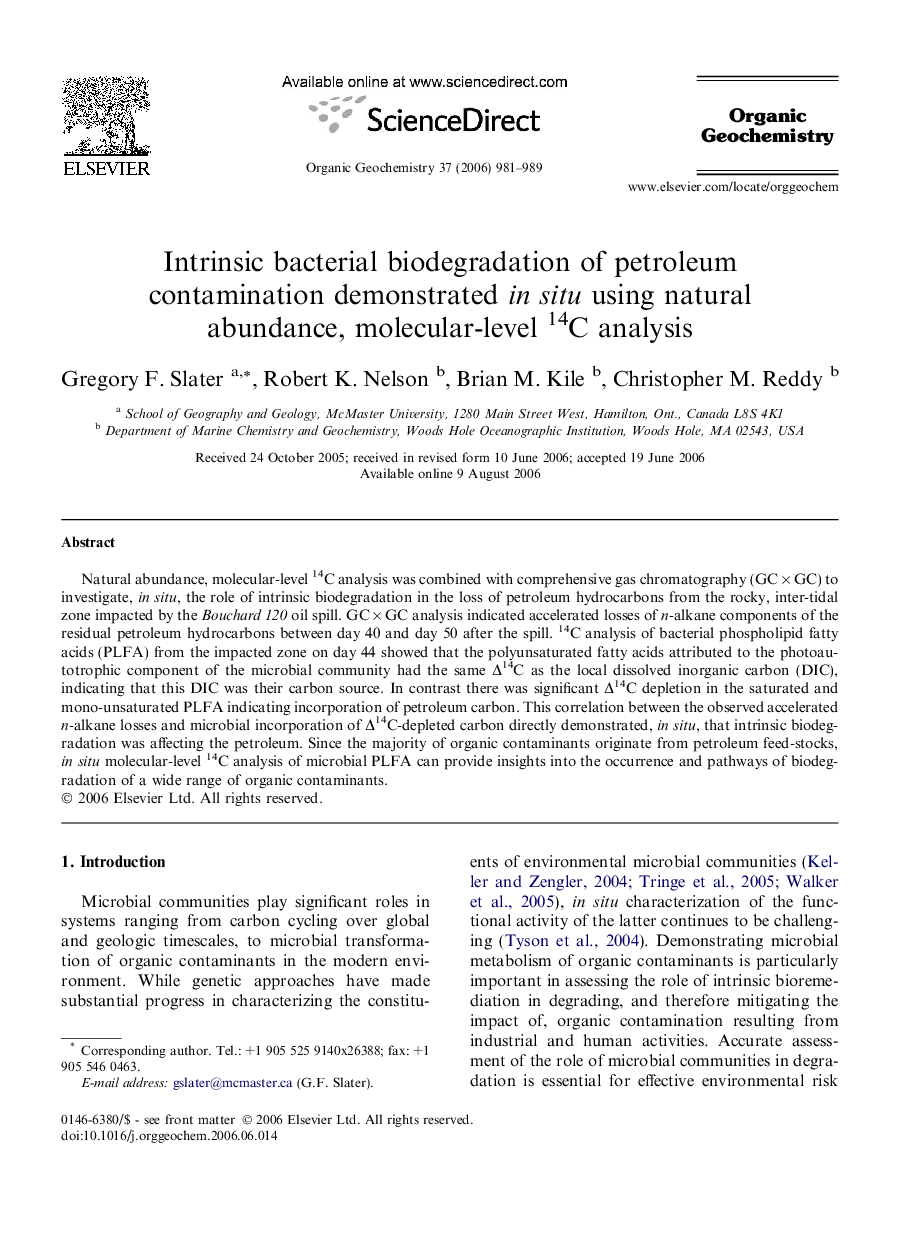| Article ID | Journal | Published Year | Pages | File Type |
|---|---|---|---|---|
| 5163036 | Organic Geochemistry | 2006 | 9 Pages |
Abstract
Natural abundance, molecular-level 14C analysis was combined with comprehensive gas chromatography (GCÂ ÃÂ GC) to investigate, in situ, the role of intrinsic biodegradation in the loss of petroleum hydrocarbons from the rocky, inter-tidal zone impacted by the Bouchard 120 oil spill. GCÂ ÃÂ GC analysis indicated accelerated losses of n-alkane components of the residual petroleum hydrocarbons between day 40 and day 50 after the spill. 14C analysis of bacterial phospholipid fatty acids (PLFA) from the impacted zone on day 44 showed that the polyunsaturated fatty acids attributed to the photoautotrophic component of the microbial community had the same Î14C as the local dissolved inorganic carbon (DIC), indicating that this DIC was their carbon source. In contrast there was significant Î14C depletion in the saturated and mono-unsaturated PLFA indicating incorporation of petroleum carbon. This correlation between the observed accelerated n-alkane losses and microbial incorporation of Î14C-depleted carbon directly demonstrated, in situ, that intrinsic biodegradation was affecting the petroleum. Since the majority of organic contaminants originate from petroleum feed-stocks, in situ molecular-level 14C analysis of microbial PLFA can provide insights into the occurrence and pathways of biodegradation of a wide range of organic contaminants.
Related Topics
Physical Sciences and Engineering
Chemistry
Organic Chemistry
Authors
Gregory F. Slater, Robert K. Nelson, Brian M. Kile, Christopher M. Reddy,
